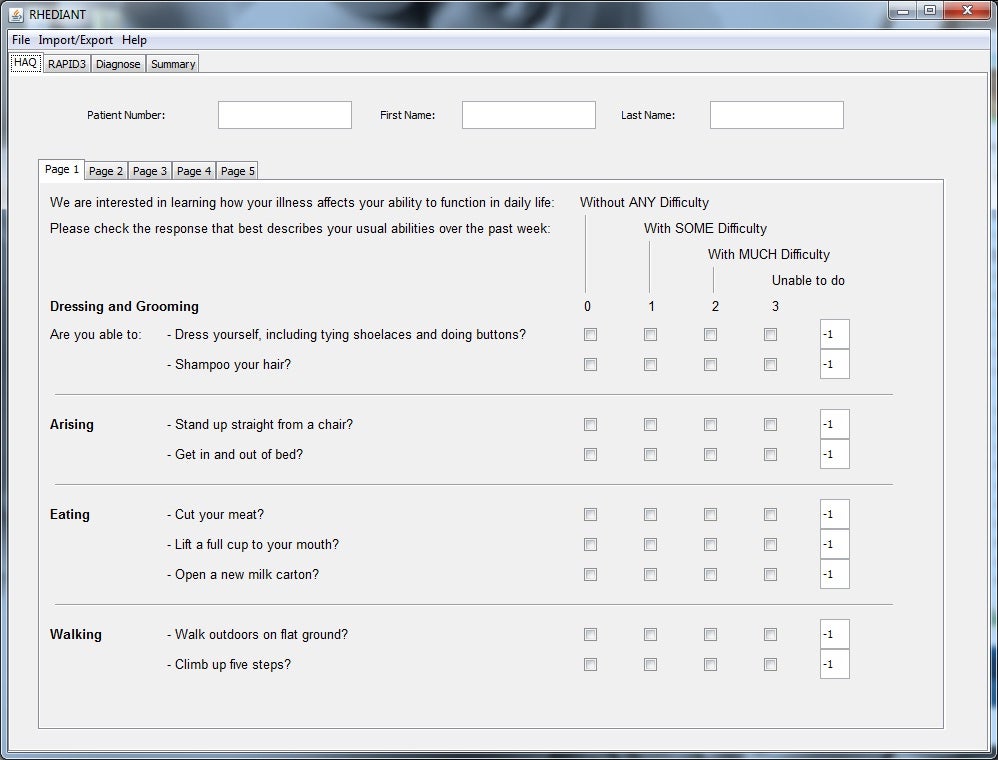Design team members: Vivian Cheung, Sunny Li and Raymond Tong
Supervisors: Prof. Catherine Burns
Background
Rheumatoid Arthritis is an inflammatory disorder that is chronic and principally affects joints, although it can also affect other organs such as the lungs, skin, kidneys, heart, etc. Individuals with rheumatoid arthritis often experience swollen, stiff and painful joints due to the inflammation. If not treated adequately, this could lead to substantial loss of functioning or mobility of the affected joint and/or organ. Diagnosis and long-term care of rheumatoid arthritis is carried out by a rheumatologist, a medical specialist in conditions and diseases affecting joints, muscles and bones.
As one of the first steps of the diagnosis process at the rheumatology clinic, the patient is required to answer a questionnaire including questions regarding how their current condition affects their daily lives. This questionnaire is currently being filled in by the patient on a piece of paper, and is entered into a computer using a computer program called Rhediant by the receptionist working at the clinic which generates a printable summary. This summary is then printed out as a physical record or copied to another system to be stored as part of the patient’s file. This process is inefficient, lacks robustness and offers a less than optimal patient experience.

Project description
In order to improve the overall patient experience in the clinic, three design objectives were identified:
- To improve the user interface of Rhediant, the computer program used to gather and organize the patient’s information by offering a more attractive and intuitive way for users of Rhediant to interact with the program.
- To improve the current workflow. The new workflow should be optimized to eliminate redundancies in the handling of patient information.
- To improve the patient experience while they are in the waiting room by offering them more “meaningful” activities than simply waiting to see the rheumatologist.
Design methodology
The Agile software development methodology will be used to achieve the design objectives. The project will be broken into several iterations with each iteration building on top of the previous iterations. Every iteration involves the team working through the full software development life cycle including: obtaining requirements, designing, implementing the code, and testing. Each iteration will have its own goals and will focus on a particular part of the design objectives as well as incorporate feedback from the previous iteration. The software will be implemented as a web application using a touch screen interface.
In addition to the Agile software development method, the contextual design approach to user-centered design will be used. The contextual design approach involves partnering and interviewing with users in order to observe their behaviour and needs.